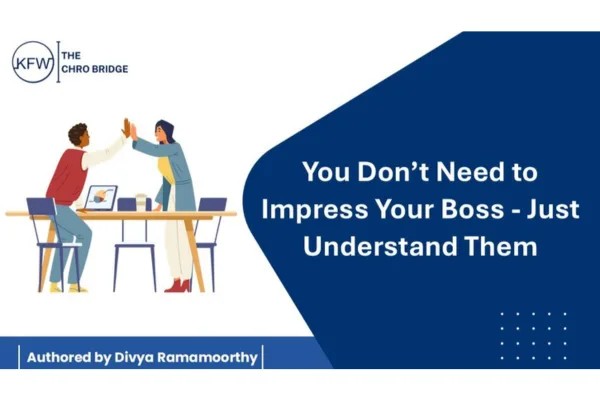You Don't Need to Impress Your Boss - Just Understand Them

Ever wondered what great professionals do differently in their Boss-Report Relationship? While many chase perfection in performance, the best professionals quietly master something else: the art of understanding and aligning with the person they report to. They don't follow a script. They read the room. They don't just manage up, they connect up. And that one shift changes everything.
Let's rewind to a time when everything looked right on paper, but something still felt off.
Monday Morning MisfiresIn a growing mid-sized company, a high-performing employee walked into their weekly one-on-one, armed with a meticulously crafted report. Charts, metrics, insights, everything the role demanded.
Five minutes in, the boss glanced at it, asked a sharp, unexpected question, then pivoted the meeting in an entirely different direction. This wasn't a one-off. Week after week, the pattern repeated.
To an outsider, it may have looked like disengagement. To the employee, it felt like failure.
But sometimes, what feels like failure is just a missed signal, one small insight away from turning everything around.
A Conversation Changed the LensA casual chat with a peer offered a surprising revelation: "She's a decision-first person. She doesn't want data, she wants direction."
It wasn't about competence. It was about the communication style. The employee adjusted course. The next meeting featured no slides, just clarity, three sharp takeaways and a business challenge that needed a decision. The boss leaned in. The conversation flowed. The dynamic changed.
That's when it became clear: Managing up wasn't about delivering more, it was about delivering differently.
What Professionals Do Differently?From HR leaders to new managers, those who succeed at navigating boss relationships tend to follow a few timeless practices:
- Observe, before optimizing: Instead of assuming what a boss needs, they observe. Do they prefer brevity or background? Do they ask "why?" or "how?" Answers often lie in patterns.
- Speak in their frequency: One leader may want bullet points on Slack. Another wants context-rich emails. The best professionals don't push their style, they mirror the one that resonates.
- Make it Easy to Say Yes (or No): No manager has time for over-explaining. What they crave is clarity. Professionals who present problems alongside well-thought-out options create influence, not confusion.
- It's not about showing effort, it's about showing relevance: Impressing a boss doesn't come from spotlighting effort. It comes from aligning with priorities. When employees focus on what moves the business forward, trust follows.
Bosses aren't just decision-makers, they're humans with pressure, blind spots, and preferences. Professionals who recognize that and show up with empathy, precision, and awareness don't just get noticed. They become trusted. In the end, a great boss-employee relationship isn't built on updates and status meetings. It's built on understanding, often in the smallest interactions, not the loudest presentations.
A Prompt Worth Reflecting OnHow do you tune in to your boss's style? Not to manage them, but to truly partner with them? The best stories often begin there.





